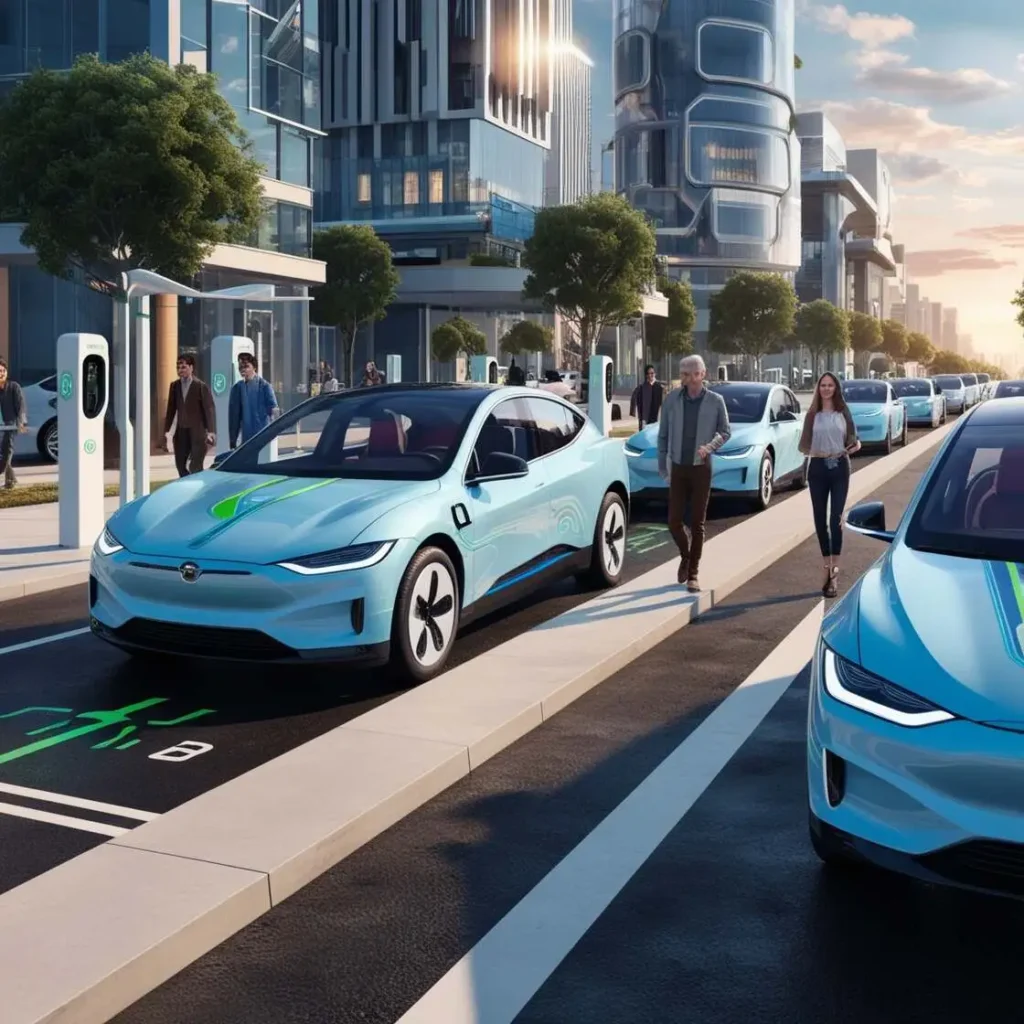Will EV Cars Become the Norm?
The world of transportation is undergoing a massive shift, and one of the most talked-about aspects of this transformation is the rise of EVs (electric vehicles). As technology advances, concerns about climate change grow, and government regulations evolve, EV cars are becoming increasingly popular. However, the question remains: Will EV cars become the norm? In this article, we will explore the various factors influencing the widespread adoption of electric vehicles, the challenges they face, and whether they are likely to replace traditional internal combustion engine (ICE) vehicles in the near future.

Index
The Rise of Electric Vehicles
The journey towards electric vehicles becoming mainstream has been a long and complex one. Though the concept of electric cars dates back to the 19th century, it wasn’t until the early 21st century that significant advancements in battery technology, environmental awareness, and market demand pushed electric vehicles into the spotlight. The growth of companies like Tesla, along with established automakers like General Motors, Ford, and Volkswagen entering the electric market, has driven electric cars from niche products to a major segment of the auto industry.
According to the International Energy Agency (IEA), in 2022, the global electric vehicle market saw a 55% increase in sales compared to the previous year. This growth was driven by the increasing availability of models, improved infrastructure, and government incentives aimed at reducing carbon emissions. Today, EV cars account for approximately 14% of all new car sales worldwide—a number that is projected to rise sharply over the next decade.
Government Policies and Incentives
One of the driving forces behind the rise of electric vehicles is government policy. Around the world, many governments are implementing incentives to encourage consumers to switch from gasoline-powered vehicles to electric vehicles. These incentives often include tax breaks, rebates, and grants for EV buyers, making electric cars more financially accessible. For instance, in the United States, the federal government offers tax credits of up to $7,500 for buyers of qualifying EV cars, depending on the model and manufacturer.
In Europe, countries like Norway and the Netherlands have led the way in electric vehicles adoption, with government policies that favor electric vehicles over traditional ICE cars. Norway, in particular, has set an ambitious goal to end the sale of new gasoline and diesel vehicles by 2025. As a result, over 80% of new cars sold in Norway are now electric. Similarly, the European Union has committed to achieving net-zero emissions by 2050, with a significant focus on the transportation sector.
While government incentives are crucial in promoting the adoption of EVs, they also present a challenge. As EV cars become more popular and accessible, governments may reduce or phase out these incentives, which could impact sales. However, with continued advancements in technology and decreasing battery costs, EVs are expected to become more affordable on their own.
The Role of Infrastructure
For EV cars to truly become the norm, adequate charging infrastructure must be in place. Currently, the availability of charging stations is one of the biggest hurdles for widespread electric vehicles adoption. In many countries, public charging stations are still relatively scarce compared to gas stations, making range anxiety a concern for potential buyers. People worry about how far they can travel on a single charge and whether they’ll be able to find a charging station when needed.
That said, the situation is rapidly improving. According to a report from BloombergNEF, the number of public charging points worldwide has increased by more than 60% since 2020. In the United States, the Bipartisan Infrastructure Law passed in 2021 allocates $7.5 billion to building a national network of electric vehicle chargers, with the goal of installing 500,000 chargers by 2030. Major automakers are also investing heavily in charging infrastructure. Tesla’s Supercharger network, for example, now has over 40,000 charging points globally, while other manufacturers like Ford and Volkswagen are partnering with charging companies to expand their networks.
Home charging solutions are also becoming more common, making electric vehicle ownership more convenient for many drivers. For those with access to a garage or private parking space, installing a home charging station allows for overnight charging, effectively eliminating range anxiety for daily commutes. As more people adopt EV cars and charging infrastructure expands, the convenience of owning an electric vehicle will only continue to grow.
Technological Advancements
One of the most significant factors contributing to the potential dominance of electric vehicles is the rapid pace of technological advancements in electric vehicle design and battery technology. Lithium-ion batteries, which power most EV cars today, have seen substantial improvements in energy density and cost reduction. According to McKinsey & Company, the cost of an EV battery pack has fallen by nearly 90% over the last decade, making electric vehicles more affordable for consumers.
Advancements in battery technology are also addressing one of the main concerns about EVs: range. Early electric cars had a limited range of about 100 miles on a full charge, but modern electric vehicles can travel upwards of 300 miles on a single charge. Tesla’s Model S, for example, boasts a range of over 400 miles, while Lucid Motors’ Air model can reach up to 520 miles. As battery technology continues to improve, future EV cars are expected to offer even greater range, potentially surpassing traditional gasoline vehicles.
In addition to batteries, electric vehicles are benefiting from advancements in autonomous driving technologies, smart connectivity, and safety features. Many electric vehicles come equipped with the latest driver-assistance systems, including lane-keeping assistance, adaptive cruise control, and automatic emergency braking. As EV cars become smarter and safer, their appeal to consumers will only increase.
Environmental Impact
One of the key reasons why Eletric cars are likely to become the norm is their positive environmental impact. Unlike internal combustion engine vehicles, electric vehicles produce zero tailpipe emissions, which helps reduce air pollution and combat climate change. According to the U.S. Environmental Protection Agency (EPA), the transportation sector is responsible for 29% of all greenhouse gas emissions in the United States, with cars and trucks being the primary contributors.
Switching to electric cars can significantly reduce the carbon footprint of individual drivers. However, it’s important to note that the environmental benefits of electric vehicles depend largely on how the electricity used to charge them is generated. In regions where renewable energy sources like wind and solar power are prevalent, the carbon emissions associated with charging an electric vehicle are much lower than in areas that rely heavily on fossil fuels for electricity generation.
Despite these challenges, many countries are moving towards cleaner energy grids, which will enhance the overall environmental benefits of EV cars. As renewable energy becomes more widespread, the transition to electric vehicles will play a crucial role in achieving global climate goals.
GM EV Cars: Driving the Future of Electric Mobility
General Motors (GM) has made a significant commitment to the electric vehicle market, positioning itself as a leader in the shift toward sustainable transportation. With a bold vision to become carbon neutral by 2040, GM is investing billions in its electric lineup, including popular models like the Chevrolet Bolt EV and the upcoming all-electric versions of the Chevy Silverado and GMC Hummer.
One of GM’s strategic moves in Eletric Vehicles innovation is the development of its Ultium battery technology. This modular battery system is designed to provide greater flexibility in power and range, allowing GM Eletric cars to reach up to 400 miles on a single charge. Additionally, the Ultium platform supports faster charging times, which enhances convenience for consumers, helping alleviate range anxiety.
GM also aims to make EV ownership more accessible by investing in nationwide charging infrastructure. Through partnerships and federal initiatives, GM is helping to build a robust network of EV chargers across North America, making it easier for drivers to switch to electric. With these advancements, GM is not only enhancing its lineup but is also playing a key role in making EVs mainstream.
The Road Ahead: Will Eletric Cars Become the Norm?
So, will electric cars become the norm? The answer is likely yes—but not without challenges. While electric vehicles are rapidly gaining popularity and government policies are pushing for their widespread adoption, the transition to a world where EVs dominate the roads will take time.
The current trajectory suggests that by 2030, a significant portion of new cars sold globally will be electric. Some estimates predict that electric cars could make up as much as 50% of all new car sales by 2030, driven by government mandates, advancements in technology, and consumer demand. However, challenges remain, particularly in the areas of infrastructure development, battery recycling, and consumer education.
In the coming years, the continued growth of electric car will depend on how effectively these challenges are addressed. If governments and industries work together to build the necessary infrastructure, improve battery technology, and make electric vehicles more affordable, it’s highly likely that Eletric cars will become the norm in the not-too-distant future.
Checkout more car trends clicking here.
